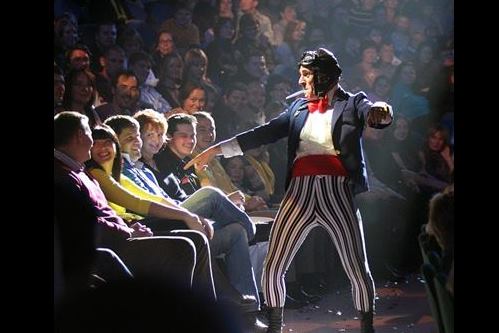Writing Hypnosis Suggestions Commands
Wording Suggestions Commands Hypnotic Influence
Effective Scripts are planned scripts
Hypnosis Scripts are effective only when every statement is precisely aimed. Effective scripts have every statement aimed precisely at one or more of the main operations of the unconscious mind. That's what makes best hypnosis scripts the best scripts.
All hypnotherapy consists of suggestions intended to change behavior. Every person holds beliefs about who they are, what they are, and the world they live in. Everyone has behaviors that they use without thinking. It is when these inner beliefs and automatic habits no longer fit the outer world that problems arise. Therefore every hypnotic suggestion needs to be aimed at a specific aspect of the inner beliefs, or at one specific aspect of unconscious behavior.
If the hypnotist cannot say exactly what each word is intended to do, and how it does it, then they do not understand what they are doing. They might as well just recite poetry to the person in the chair.
Hypnotic suggestions will only work when they are
a) targeted precisely at one belief or behavior,
and
b) use a technique that matches how the mind functions.
Hypnotic suggestions that do not do both these things at the same time will be ignored or misunderstood.
Structure of a suggestion
To create an effective suggestion, the therapist needs to decide
a) what behavior is causing the problem,
b) what belief is linked to the behavior,
c) the right hypnotic technique to use to cause the change, and
d) how to word the suggestion - Direct, Indirect, Metaphor.
Hypnosis Suggestion Wording

Every hypnotist has their own style. Some are very show-bizzy, some work in a formal office with gentle hypnotherapy, some do dramtic street hypnosis. Doctors and nurses use hypnosis techniques often without realizing. Advertisers use hypnosis techniques all the time. Lovers use hypnosis to heighten their relationship. All these different way of doing hypnosis actually use only a few basic techniques.
There are five Hypnosis Suggestion Styles, ways of effecting change through words. These are: Direct Suggestion, Indirect Suggestion, Conversational Hypnosis, Covert Hypnosis, Shock induction.
DIRECT SUGGESTION
Direct suggestion hypnotherapy is the simplest and most direct way of affecting the subconscious mind. Direct suggestions are like commands fired at the unconscious mind. They may seem unsophisticated but they can be very effective. All hypnotherapy uses direct suggestion to some extent. Direct suggestion has the advantage of being easy to formulate, easy to understand and easy to deliver. The disadvantage is that the subconscious mind may reject the suggestion if it conflicts with core beliefs. The structure and wording of direct suggestions needs considerable skill to achieve maximum effect. This section has examples of good and bad direct suggestion.
INDIRECT SUGGESTION
Indirect suggestion hypnotherapy was developed to avoid the disadvantages of direct suggestion. Indirect suggestions are elegant and subtle and slide around the subconscious mind's resistance to direct suggestion. The disadvantages of indirect suggestion are that they are difficult to construct on the fly, and they can sometimes be so indirect that the subconscious mind either does not react at all, or takes the wrong meaning from them. There is a long standing debate as to whether direct or indirect suggestions are best. Research suggests that both are equally effective when done well.
CONVERSATIONAL SUGGESTIONS MILTON MODEL
Milton Erickson was a famous therapist of last century. He had an almost magical ability to hypnotize people without them knowing. The founders of NLP studied how Erickson did this. The result was The Milton Model. The Milton Model show how to use subtle forms of wording to bypass conscious awareness and influence the unconscious mind unnoticed. This is the basis of stealth inductions. This page is a classification of the types of indirect suggestion used in conversational hypnosis. Detailed examples of how to use all the Milton Model techniques are listed here.
COVERT HYPNOSIS SUGGESTIONS ANALOG MARKING
The ultimate in indirect suggestion uses Analogical Marking as part of a conversational hypnosis induction. This is a way of embedding commands hidden in normal conversation. This technique requires a great deal of experience of hypnosis induction. The technique is not normally used in hypnotherapy. You need to be able to read your client's reactions to your words, and vary your delivery to suit their responses. Done correctly it is an elegant way to influence someone else's mind. Done badly, you will lose their trust instantly. Here are examples of how to word your induction.
INSTANT INDUCTIONS STAGE HYPNOSIS SHOCK INDUCTIONS
Some 'hypnosis commands' do not need words at all. Instant and rapid inductions are done physically. Most hypnotherapy inductions are done slowly and gently. Most stage inductions are deliberately spectacular and impressive. Stage inductions often hypnotize hundreds of people at once. This section discusses the theory and practice of rapid and stage inductions. There are links that show you how to do an instant induction.
TARGETING HYPNOTHERAPY SUGGESTIONS
 Hypnotherapy can use any style or approach. However, the wording has be aimed at a small number of quite specific targets. If your suggestions are not aimed the right behavior, or do not use one or more of the basic hypnotic phenomena then they will not work. You need both skills and knowledge for writing hypnosis scripts that work.
Hypnotherapy can use any style or approach. However, the wording has be aimed at a small number of quite specific targets. If your suggestions are not aimed the right behavior, or do not use one or more of the basic hypnotic phenomena then they will not work. You need both skills and knowledge for writing hypnosis scripts that work.
There are four aspects of targeting suggestions. There are two client targets: Behaviors and Core Beliefs. And two Suggestion Wording models: Hypnotic Phenomena and Hypnotic Logic. In addition, suggestions must fit with some Hypnosis Theory.
By following this format you can learn to write highly effective commands. Weave these commands into stories and metaphors and you can make lasting change.
SUGGESTIONS TARGETING CORE BELIEFS
Every hypnotic suggestion must be aimed at a core belief if it is to be effective. To change your behavior you need to change your core beliefs. We all have basic beliefs about who we are, what we can do, what other people will do. These beliefs are created early in life, and are very difficult to shift once they are established. We all behave for the rest of our lives as if these beliefs are true. This shows what core beliefs to target, and how to word suggestions aimed at changing beliefs.
SUGGESTIONS TARGETING NLP COGNITIVE FILTERS
NLP theory states that your mind takes shortcuts that affect how you think and behave. Cognitive filtering has a powerful effect on shaping personality and behavior. Many behavioral issues exist because people do not recognize the existence of their own mental filers. Understanding the four type of Cognitive Filter gives you four more ways that you can target hypnosis suggestions and commands.
SUGGESTIONS TARGETING HYPNOTIC LOGIC
Milton Erickson developed a way of wording hypnotic commands that has been widely imitated. The details are in the Milton Model section. This section gives a summary of each of the Milton Model Techniques. Use this summary to check that you have included all the techniques you need to in your script.
SUGGESTIONS TARGETING HYPNOTIC PHENOMENA
During trance your mind will experience a number of effects that are associated with the trance state. These are called Hypnotic Phenomena. There are only a few hypnotic phenomena. This section explains what they are and gives examples of hypnotic suggestions utilizing them.
SUGGESTIONS TARGETING HYPNOSIS THEORY
Clinical Hypnotherapy uses many powerful techniques. Every technique is based on a theory of hypnosis. This section outlines the main theories of hypnosis and hypnotherapy. Your hypnotic suggestions will be influenced by the theory of hypnosis your use, whether you are aware of it or not.
HTUT06
MORE RESOURCE PAGES ON HOW TO HYPNOTIZE






















